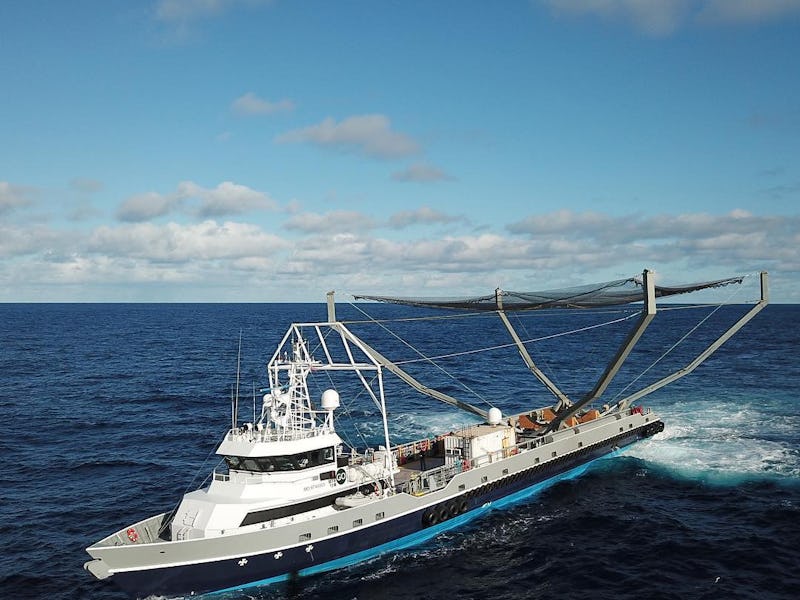SpaceX Completes Arm Install on Mr. Steven, the Massive Falcon Recovery Vessel

SpaceX’s giant catcher’s mitt is almost ready to go. Engineers completed the upgrades to the arms on Mr. Steven on Wednesday, the vessel used to recover the fairings from Falcon rockets as they glide back to Earth. The original net failed to catch any fairings, but the upgraded version has four times the area of its predecessor.
Mr. Steven is meant to catch the fairings that protect the satellite on its way to orbit before being discarded. Once that happens, fairings fall back from space at around eight times the speed of sound, which naturally makes them tough to recover for use in future missions. Modifications to the fairing’s design like onboard thrusters and a guidance system are designed to position it for landing before a parafoil deploys and helps it land on the ship’s netting. So far Mr. Steven hasn’t caught anything after its first deployment in February. Musk explained on Twitter that “catching rocket fairings falling from space has proven tricky, so we made the net really big,” admitting tongue-in-cheek that “it looked smaller on paper.”
The upgrade was first unveiled by Musk on June 5, with construction hosted at Los Angeles’ Berth 240 at Terminal Island — the same place where SpaceX is constructing its Mars-bound BFR rocket. Teslarati captured images of the work, which suggested the new arms are around 65 meters squared, resulting in a net measuring 0.85 acres. The autonomous spaceport drone ships like Of Course I Still Love You that recover the boosters use a landing area around the same size, meaning Mr. Steven should compare favorably in size.
Recovering the fairing is a critical aspect of SpaceX’s future plans. Musk previously described the component as as “a pallet of cash worth $6 million dollars falling through the sky.” The cost of a Falcon 9 comes to around $62 million, meaning SpaceX will want to save as much as possible to make spaceflight economical and produce more ambitious mission plans.
It may not be long before Mr. Steven sees action. Teslarati notes that it could be deployed in two weeks during the Iridium-7 Falcon 9 mission scheduled for July 25.
Hopefully Mr. Steven actually catches the fairing this time.